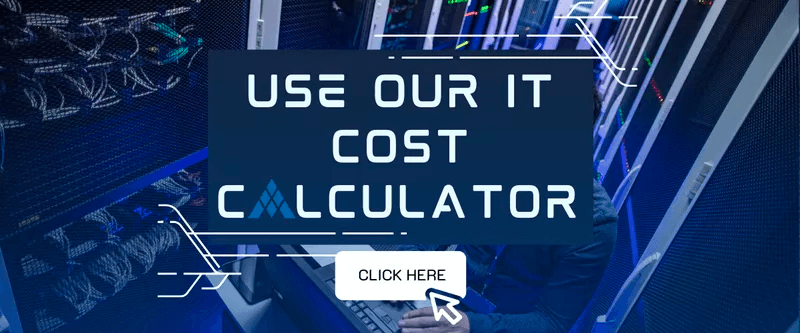In the event of a natural disaster, cyberattack, or another unexpected incident, your business may be forced to shut down for at least a short period of time. Some incidents may take hours or days to recover from, while others may cause weeks of downtime.
This can have a detrimental impact on your company’s reputation, it can cost you hundreds of thousands in revenue, you may lose customers, and there are various other negative long-term implications. To help mitigate some risk and prepare for the unforeseeable, it’s important that you create a solid disaster recovery plan.
A disaster recovery plan (DRP) is a detailed document that outlines what steps your business will take in the event of a disaster or incident. It should include several key components to ensure that your company can resume normal operations as quickly and efficiently as possible after an adverse event. If you’re ready to create your own DRP checklist, read on for our suggestions for your top eight must-haves.
1. Understand Backup and Recovery vs Disaster Recovery
There are a lot of similarities between backup and disaster recovery, but there are also some key differences, and it’s important to understand the differences so that you can choose the best solution for your company.
The key difference between backup and disaster recovery is the intent of each. Backup is about ensuring data is secure, while disaster recovery is about ensuring that operations can resume if something interrupts them.
Generally speaking, you can’t have a good disaster recovery plan without a solid backup plan in place.
2. Start a Staff Communication Checklist
A communication checklist is a great place to start when creating your disaster recovery plan. You’ll want to ensure that the people responsible for key tasks know what to do when an adverse incident occurs. You should also think about how you will communicate with your staff during a disaster.
You might want to consider creating a staff communication checklist that includes the following topics:
- What steps should staff take when disaster strikes?
- How will each staff member be notified of the emergency?
- Who is responsible for relaying information to other departments? How will employees report to work during a disaster?
- What should they do if they cannot make it to work?
Discuss these questions with your IT leadership or backup and your disaster recovery solutions provider. The answers will help you lay the foundations for your DRP.
3. Facilities and Equipment Checklist
Another important aspect of your disaster recovery plan checklist is to make sure you have an accurate inventory of your facilities and equipment. This includes everything from your computer systems and network infrastructure to your furniture and office supplies.
You should also take note of any short- and long-term renovation projects you have planned. This way, if your business is forced to relocate temporarily, or if a particular piece of equipment needs to be replaced, you’ll know where to find the necessary materials.
You should also create a list of your company’s critical power and utility requirements. This will help you determine the best places to locate your hardware as well as the best means of backup power.
4. Data Recovery Checklist
In the event of a disaster, you might be able to retrieve some of your data. However, if the damage is significant, your data might be corrupted and unreadable. Therefore, it’s crucial that you have a data recovery checklist ready. This should include details about which data should be backed up and stored off-site, as well as which data should be stored in the cloud.
You should also create a list of the software and hardware you might need to help recover lost data. You should definitely create a separate checklist for each business-critical application.
5. Disaster Recovery Team Checklist
Another important checklist item is a list of the members of your disaster recovery team. This group of individuals should consist of people from various departments and/or business units.
You should include people who have the authority to make operational decisions during a crisis, such as the CTO or CIO, as well as individuals who are familiar with specific systems, such as your application support and network engineers.
Your disaster recovery team should meet at least quarterly to go over preparedness plans and discuss what each member is currently doing to improve the team’s overall preparedness.
6. Off-site Storage and Backups Checklist
If you don’t already have a regularly scheduled off-site data backup plan, you should create a backup and Disaster recovery checklist item to initiate this process. You should include both a backup copy of your data, as well as a copy of your data off-site.
You should also create a checklist item for your current data backup system. This way, you can regularly test the integrity of your data backups to ensure they’re usable in the event of a data disaster.
7. Network Infrastructure Replacement and Restoration Checklist
If a certain portion of your network infrastructure is lost or damaged, you’ll need a checklist item to initiate a replacement process. You should also create a checklist item that includes notifying your vendors that provide services such as internet, power, and network connectivity.
This way, you can inform them of the situation and know they’ll be ready to assist you as soon as you need them. You should also create a checklist item that outlines how you will bridge your damaged network equipment until you can get it replaced.
8. Cloud-based Disaster Recovery Plan Checklist
Finally, you should have a checklist item that outlines the items from your standard disaster recovery plan that should be adjusted to fit your cloud-based DR plan. This way, you can quickly and accurately compare the two plans to learn where you need to make adjustments.

Backup and Disaster Recovery Little Rock
With rapid advancements in technology, we all have become more dependent on the internet and cloud-based services than ever before. This makes it especially important to have a solid disaster recovery plan in place. With these suggestions for your eight must-haves, you can create a checklist for the key components of your DRP.
Need help developing your own disaster recovery plan? Contact Scale Technology to schedule a free assessment of your network today!


